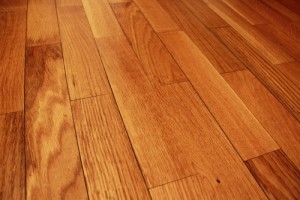
While hardwood floors certainly require significantly less maintenance than carpet or other surfaces, there are still a number of issues that can compromise the integrity of your hardwood floors.
Unlike carpet, wood floors have the potential to last the entire lifetime of the home or building in which they are installed. That being said, homeowners need to be aware of hardwood floors’ greatest enemy: moisture.
Changes in humidity levels in your home, as a result of seasonal weather changes outside, can cause the expansion and contraction of your hardwood floors. Increased humidity levels will cause your floors to expand. Decreased humidity levels will cause contraction, possible even resulting in cracks in your floor.
The most important thing that you can do to maintain your hardwood floors is to effectively regulate the seasonal changes in humidity levels in your home. That being said, here are four common issues that can compromise the integrity of your hardwood floors:
- Cracking
In the winter months, you most likely crank up your efforts to heat your house. This, in turn, significantly reduces the amount of humidity present inside your home. While it might not be noticeable to you, you can be sure that your hardwood floors will be affected.
Decreasing humidity levels cause the contraction of floorboards, effectively creating spaces between them. In some types of floorboards, cracks can stretch to the thickness of a dime. Regulating moisture in the air will help you significantly reduce the degree of seasonal change that your floorboards experience.
- Cupping
Minor cupping cases may be unnoticeable to the untrained eye. In fact, these changes in your floors are considered quite natural. More serious cupping, however, might be an indicator of a greater moisture problem.
Cupping refers to a condition where the edges of a board raise slightly higher than the center of the board. This is often the result of excessive humidity levels causing your floorboards to expand and push against one another.
Indoor moisture control might not be enough in this case. Plumbing moisture that rises up into the subfloor and the hardwood flooring can be responsible as well. Fortunately, drying out the atmosphere in your home, to a certain extent, can effectively reduce cupping in your floorboards.
- Crowning
As you might imagine, crowning is the direct opposite of cupping. The middle of the floorboard rises higher than its edges. Sometimes, crowning occurs when the surface of the floorboard is exposed to excessive amounts of moisture.
More often, crowning is the result of premature sanding of the floorboards after an inverse, cupping reaction. Some people recommend sanding to correct a floorboard that is cupping. However, if this practice is done prematurely, the top edges of the floorboard will be lower than the rest of the when moisture content returns to a normal level.
- Buckling
Lastly, one of the most extreme reactions that can take place within your floorboards is known as buckling. Buckling refers to the process where your hardwood flooring essentially pulls away from the subfloor below it. In the worst case, this can progress to a separation of several inches.
Luckily, buckling only occurs when your floorboards are subject to an extreme flooding event. Even in this case, it is usually possible to repair your floors, rather than having to replace them altogether.
As you can see, moisture is the main culprit when it comes to damaging the integrity of your hardwood floors. Regulating humidity levels in your home will help your floors last the lifetime of your home.
By Mark Freeland Join me on Google +